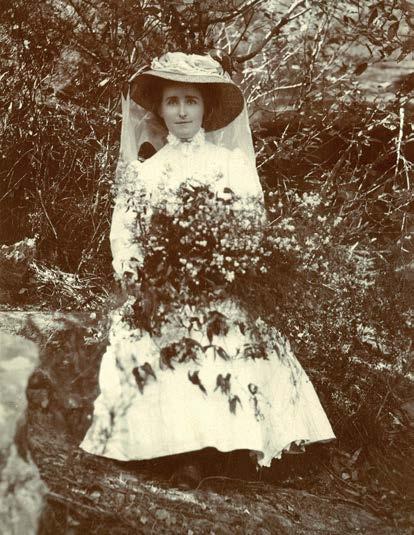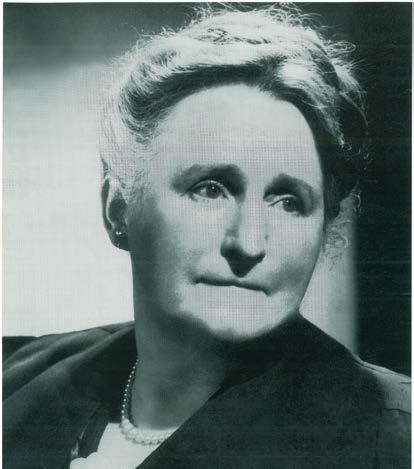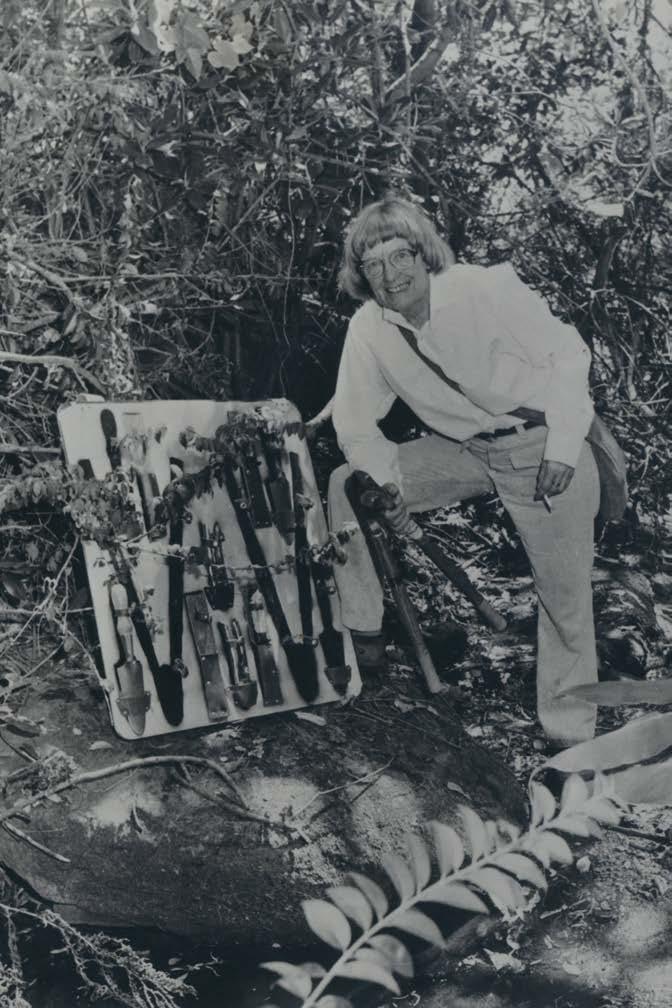
4 minute read
Reflect
Natural Origins
BY GRAHAM QUINT, DIRECTOR, CONSERVATION
The National Trust (NSW) will celebrate its 75th Anniversary this year. The organisation has evolved to represent not just one movement for the conservation and protection of heritage, but the work of many. We represent a collective of like minds passionate about unique beauty, vulnerability and the irreplaceable value of our natural, cultural and built heritage. Two of the organisations pioneering stories are those of Annie Forsyth Wyatt, and sisters Joan and Eileen Bradley.
Annie Forsyth Annie Forsyth Wyatt OBE is celebrated as the founder of the National Trust movement in New South Wales. Born in 1885 in Redfern, she was an avid conservationist with a keen community spirit who dedicated her time to a number of causes and saw the valuable contribution of women in public service during World War I. She established the Ku-ring-gai Tree Lovers’ Civic League and noted the success of the National Trust in England. In 1944, she presented to the Forestry League (NSW) Conference and made the case to form a National Trust in Australia which was approved on 6 April 1945. The first committee included Walter Cresswell O’Reilly, Annie Wyatt and Arthur Cousins. One of the first campaigns was to protect Macquarie Street against proposed developments and the National Trust produced an initial list of items to be preserved – which was supported.
Joan and Eileen Bradley: Bush Regeneration Pioneers The National Trust has worked for four decades in the field of restoring urban bushland. I recall being, together with my wife Jenny, among the group of people who attended the first National Trust Bush Regeneration School run by Joan Bradley in 1979. This took place at Athol Hall located at Bradley’s Head in Sydney. In the 1970s the National Trust’s Landscape Conservation Officer, Evelyn Hickey (nee Bloom), consulted with the Bradley Sisters, Joan and Eileen, extensively. They had developed their ‘minimal disturbance’ method of regenerating bushland, which had been taken up by Lane Cove Municipal Council. Other Councils had expressed interest in the program to counter the invasion of Sydney’s urban bushland valleys by weeds such as privet and lantana. At the time, many Councils considered it impossible to control these weeds, which were dominating Sydney’s bushland.
The National Trust worked initially with the Bradley Sisters and, following Eileen’s death, with Joan to establish its Bush Regeneration program. The program expanded quickly to cover most of the local councils in Sydney and across the state to as far afield as Lismore. It was a breakthrough in those early years to convince Councils that it was economically feasible and viable to remove weeds and restore bushland. The collaboration between Joan Bradley and the National Trust was crucial to the early success of the program, which has – over the years – evolved into a now generally accepted and essential restoration process for countering urban impacts on bushland ecosystems.
Joan Bradley was a chemist and her scientific approach to documenting her work contributed greatly to the National Trust’s initiation of this work and set the scene for the later establishment of a Bushland Management Committee. The committee was comprised of botanists, ecologists and weed science experts and advised on expanding the program to deal with weed-dominated areas adjoining bushland to reduce the impacts of weeds propagules on bushland areas.
The National Trust salutes Joan and Eileen Bradley for their pioneering work and contribution to the National Trust’s work on conserving the natural heritage. We continue this work with our Bushland Management Service led by Gaetano Sanacore.

Top left image Annie Forsyth Evans (later Wyatt) is photographed here at approximately age 19, surrounded by the Australian bush and holding wildflowers – both of which she loved.
Bottom left image The National Trust founder believed women had an important role to play in community service.
Right image Joan Bradley, pioneering bush regenerator.

IN MEMORY
Jillian Oppenheimer OAM
The National Trust (NSW) lost a dedicated member on 9 October 2019. Jillian Oppenheimer was the founding Chairman of the New England Regional Committee of the National Trust and was elected to the Board of Directors with overwhelming support and was Deputy President of the National Trust (NSW) for 10 years.
Her volunteering efforts and love of heritage and history benefited many organisations. She was a founding member of the Walcha Branch of the National Parks Association of NSW and in 1975, was instrumental in creating the Oxley Wild Rivers & Werrikimbe National Parks. Jillian also served on the Board of the University of New England. In 1999, Jillian received an Order of Australia in part for securing Saumarez Homestead for the National Trust. The Oppenheimer family has donated to Saumarez Homestead for sale, and other purposes, the remaining stock of Jillian Oppenheimer’s various books. The National Trust (NSW) is very grateful for Jillian’s years of significant contribution and dedication to the work of the Trust and, of course, for Saumarez Homestead in Armidale. She will be greatly missed.





